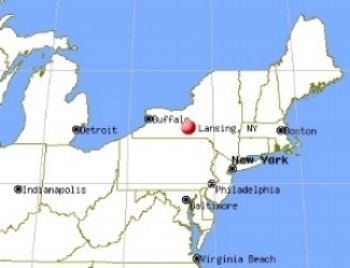Fur trapping, similar to other forms of state sanctioned violence against wildlife, is legal today because the time, place and manner of the brutality is conveniently shielded from public view. Broader scrutiny is deflected through clever messaging tactics employed by wildlife agency public relations experts who cloak this commercial activity as a necessary evil.
Addressing all of the communication schemes employed for manipulating public opinion, silencing opposition, and whitewashing violence against animals could require one to author an entire book (or perhaps teach a graduate course at Cornell University, where so-called “human dimensions” studies includes such instruction).
While this blog could not accommodate such a detailed analysis, it may be useful to focus this discussion on the art of conflation, or more specifically, when two or more concepts that share some characteristics are merged as a single identity to the point that the differences are blurred or become lost.
The conflation of recreational (“fur”) trapping and “nuisance” wild animal control is a perfect example of how language is contrived to support and promote an agenda.
Other than terrorizing wild animals though, these two activities have little else in common.
Fur trapping and “nuisance” control are two distinct activities serving different purposes. Each activity is governed by separate licenses, applications and laws. Each depends on unique objectives, skill sets and measurements of success. A “nuisance” control permit is customarily free, yet a licensing fee is always imposed on fur trappers.
“Nuisance” control consists of the selected removal of individual animals whose behavior or condition, such as illness, can be controlled. "Nuisance animal" is a vague label used, accurately or not, to denote an animal who is causing or threatening to cause property damage, or perceived to pose a health or safety threat to domestic animals or people.
In Indiana, the hide of a “nuisance” animal cannot be sold, traded, bartered or gifted. And, in some states, anyone wishing to control “nuisance” animals for a fee, must satisfy testing, continuing education and/or annual reporting requirements.
“Nuisance” problems can be remedied non-lethally. And, the mere presence of an animal does not qualify him/her as a “nuisance”.
Conversely, fur trapping is indiscriminate and targets healthy populations of a chosen species, not individual problem animals. Fur trapping is regulated by particular seasons that correspond with the ripeness (plushness) of a specific species’ fur. Furbearing animals are either discovered dead in traps or killed by trappers, skinned for their pelts and the fur is sold for profit generating purposes.
Fur trapping is always lethal. Wildlife agencies overseeing this activity also mandate the use of “game harvest reports”.
Fur trapping does not control the spread of disease, including rabies, as sick animals are not attracted to bait. In fact, fur trapping may actually serve to exacerbate the spread of disease because only healthy, mature and potentially immune animals are the ones being killed, and therefore removed from the local population.
Despite the numerous distinctions between fur trapping and “nuisance” control, these activities are routinely conflated by trapping proponents to promote and justify more killing. Wildlife agency personnel capitalize on an uninformed public and the nuance between fur trapping and “nuisance” control to disguise the gratuitous nature of the violence, while promoting still more consumptive use of wildlife. And, as evidenced by the Liddle v. Clark, et al., litigation, this tactic has also proven successful for opening up public lands, unbeknownst to the public, for private commercial gain.
The twisted linguistics also establish a contrived need for trapping animals and enable state wildlife communication experts to package fur trapping as a necessary evil. By conflating these two activities, trapping proponents disguise recreational/fur trapping – an increasingly unpopular, commercial exploitation of wild animals – as a more acceptable, publicly palatable endeavor.
As evidenced by the Liddle litigation, the communications and messages are all calculated for the purpose of creating an appearance of responsible stewardship over public lands and the public’s well-being while mischaracterizing an otherwise secretive, dangerous, and morally reprehensible activity. It also allows connected insiders from the private sector to access public lands for commercial gain.
Center for Wildlife Ethics is working to expose trapping industry cruelty and the purposeful conflation of fur trapping with so-called "nuisance" trapping. If you have information on an animal trapping incident and would like to assist CWE's efforts to stop trapping cruelty, please complete our online survey.







